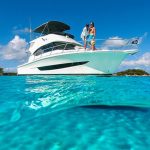Wolverine World Wide is tapping into the FX rate upside of the European market in its Merrell business while it repositions Sebago and Hush Puppy for accelerated growth. WWW saw revenues for the first quarter increase 17.4% to $224.9 million from $191.5 million in the year-ago period. Excluding the effect of the weaker dollar, sales would have increased 14.0% from a year ago. Excluding both the FX rate benefit and $9.8 million in sales attributed to the Sebago brand acquired in Q4 2003, sales would have increased approximately 8.9% for the quarter.
The Wolverine footwear group, which includes the companys namesake brand as well as the Harley-Davidson and Bates footwear brands, was no laggard in delivering revenue upside in the quarter as sales increased in the low double-digits for the group. Wolverine brand sales were up in mid-singles while H-D and Bates delivered double-digit sales gains.
Caterpillar footwear sales were said to be flat in the quarter, but U.S. sales were reportedly up in the high single-digit neighborhood, due primarily from increased demand in the industrial work segment. Europe was off in mid-single-digits, but WWW sees improvement on the horizon after strong response to the fall line.
Hush Puppy sales were up low single-digits, driven by “very solid” international growth, particularly in the U.K. Sales in the U.S were “slightly lower” as a repositioning resulted in fewer close-out and discount channel sales that more than offset gains in department stores. WWW said that HP is now in 134 Federated doors this spring and scheduled to be in 175 doors for fall, versus just 47 stores last fall.
But it was again the Merrell business that outshined all other brands as sales increased more than 25% and delivered double-digit gains in every region. The company said it is now 10 times larger than when they bought it in 1997. Europe “more than doubled”, thanks to strength in the fashion athletic and multi-sport categories. The Europe business is “leaning a little stronger” in mens than it is in the U.S. The company sees tremendous upside here, estimating that Europe sells 20% more footwear than the U.S.
The U.S. Merrell business was led by gains in sport and casual sandals, which were said to be “up significantly”, as were the multi-sport and core outdoor categories. The U.S business is roughly 50% womens, 8% to 10% kids, and a little more than 40% in mens. While the brand has bee heavily weighted to department stores and outdoor specialty, Merrell will also now begin to penetrate the athletic specialty channel, adding 50 doors at The Finish Line for fall.
WWW will look at licensing the first Merrell store by the end of Q3, responding to strong interest from a umber of independent retailers.
Tim ODonovan, company president and CEO, said that Merrell is “one of those unique brands that has the opportunity to become a very large business, considerably larger than it is now.”
Gross margin for the company was up 190 basis points to 38.0%, including a 100 bps gain for “slipper re-alignment initiatives”, as well as FX rate benefits.
First quarter net income jumped 65.9% to $12.3 million, or 30 cents a share, compared with $7.4 million, or 18 cents, in the year-ago period. WWW saw a four cents a share benefit from slipper business changes and a penny a share related to spring initiatives of its Sebago unit.
Excluding those one-time gains, WWW still bested analysts estimates by three to four cents. Merrells profit contribution to the company increased 40% in Q1.
Order backlog was up about 12% at quarter-end, but increased fill-in business also looks to boost sales this year. Management said fill-in sales were up about 14% in Q1 and now make up about 50% of sales. Inventories were essentially flat at quarter-end.
Wolverine World Wide now sees earnings for the year in the $1.44 to $1.52 per share range, up from its previous guidance of EPS of $1.37 to $1.43 per share. Sales are forecast between $960 million and $980 million, up $15 million from its previous estimate. The forecast, at mid-point, would assume a sales increase of roughly 7.0% for the remainder of the year.












